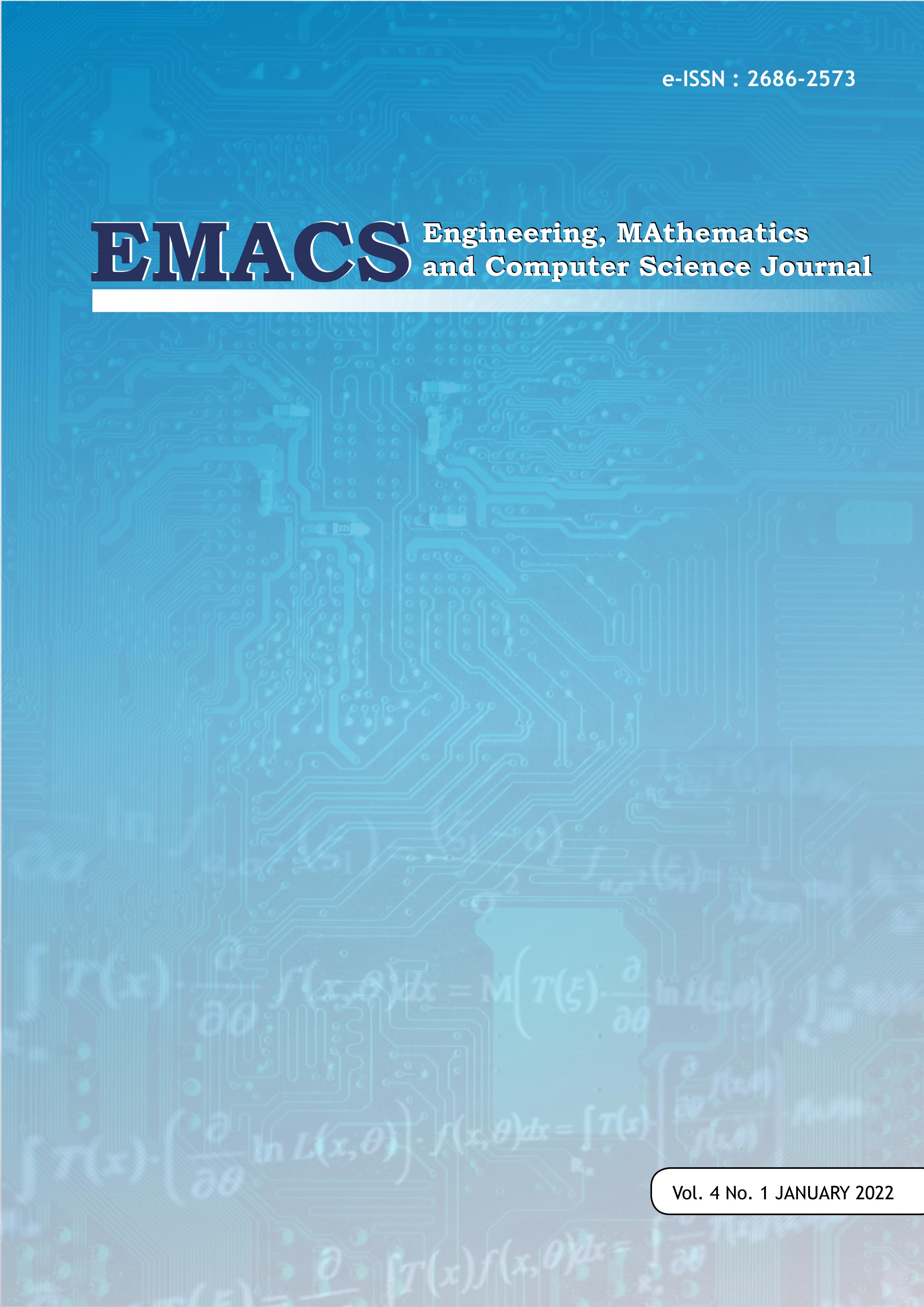Fractional Generating Function from The Square Root of Two with A-B Goen Numbers
DOI:
https://doi.org/10.21512/emacsjournal.v4i1.8073Keywords:
Numbers, Functions, Square Root of Two, Irrational NumbersAbstract
The square root of two is an irrational number that cannot be written as a fraction of the numerator and denominator. By using the generating function of A-B Goen, from the resulting set of numbers, the sequence of A-B Goen numbers can be obtained by selecting integer numbers. The A Goen numbers are generated from the generator function which have integer numbers, while the B Goen numbers are obtained from the sequence numbers. In this study, through the generating function of A-B Goen, it can be proven that the division between the A Goen number and the B Goen number in an infinite sequence will result the value of the square root of two.
References
Goenawan, Stephanus Ivan. (2020). Comparison Simulation Analysis Of The Gradual Summation Of A Function With Recognition Of Direct Extrapolation Via IN Series. IJASST Univ. Sanata Dharma, Yogyakarta.
Goenawan, Stephanus Ivan. (Januari 2020). Order Theory I And II As Foundations For Finding Relationship Between Formulas, Engineering, Mathematics, and Computer Science (EMACS) Journal, Vol. 2 No. 1. hal 1 – 4, p-ISSN 1410-2765.
Goenawan, Stephanus Ivan. (2021). Fungsi Pembangkit Bilangan A-B Goen, Berguna Secara Komputasi Untuk Mencari Pecahan Pembilang dan Penyebut Pada Bilangan Irasional Akar Dari Dua. HKI: EC00202135535, 27 Juli 2021., Link Channel AtmaJaya: https://youtu.be/D7ue-knyPBs
Gel’fand, Izrael M.; Shen, Alexander. (1993). Algebra (3rd ed.). Birkhäuser. p. 120. ISBN 0-8176-3677-3.
Lord, Nick. (November 2008). “Maths bite: irrational powers of irrational numbers can be rationalâ€, Mathematical Gazette 92. p. 534.
Marshall, Ash J., and Tan, Yiren. (March 2012). “A rational number of the form aa with a irrationalâ€, Mathematical Gazette 96. pp. 106-109.
Mitchell, Douglas W. (November 2003). “Using Pythagorean triples to generate square roots of I2â€, Mathematical Gazette 87. 499–500.
Katz, V.J. 1995. “Ideas of Calculus in Islam and India.†Mathematics Magazine (Mathe-matical Association of America), 68(3):163–174.
Krantz, Steven George (2006). Calculus: Single Variable, Volume 1. Springer Science & Business Media. p. 248. ISBN 978-1-931914-59-8.
McQuarrie, Donald A. (2003). Mathematical Methods for Scientists and Engineers, University Science Books. ISBN 978-1-891389-24-5
Salas, Saturnino L.; Hille, Einar; Etgen, Garret J. (2007). Calculus: One and Several Variables (10th ed.). Wiley. ISBN 978-0-471-69804-3.
Stewart, James (2012). Calculus: Early Transcendentals, 7th ed., Brooks Cole Cengage Learning. ISBN 978-0-538-497 90-9
Thomas, George B., Maurice D. Weir, Joel Hass, Frank R. Giordano (2008), Calculus, 11th ed., Addison-Wesley. ISBN 0-321-48987-X
Zill, Dennis G.; Wright, Scott; Wright, Warren S. (2009). Calculus: Early Transcenden-tals (3 ed.). Jones & Bartlett Learning. p. xxvii. ISBN 978-0-7637-59957.
Downloads
Published
How to Cite
Issue
Section
License
Copyright (c) 2022 Engineering, MAthematics and Computer Science (EMACS) Journal

This work is licensed under a Creative Commons Attribution-ShareAlike 4.0 International License.
Authors who publish with this journal agree to the following terms:
- Authors retain copyright and grant the journal right of first publication with the work simultaneously licensed under a Creative Commons Attribution License - Share Alike that allows others to share the work with an acknowledgment of the work's authorship and initial publication in this journal.
- Authors are able to enter into separate, additional contractual arrangements for the non-exclusive distribution of the journal's published version of the work (e.g., post it to an institutional repository or publish it in a book), with an acknowledgment of its initial publication in this journal.
- Authors are permitted and encouraged to post their work online (e.g., in institutional repositories or on their website) prior to and during the submission process, as it can lead to productive exchanges, as well as earlier and greater citation of published work.
USER RIGHTS
All articles published Open Access will be immediately and permanently free for everyone to read and download. We are continuously working with our author communities to select the best choice of license options, currently being defined for this journal as follows: Creative Commons Attribution-Share Alike (CC BY-SA)





